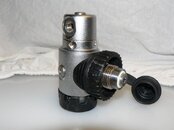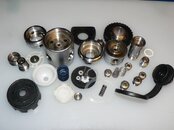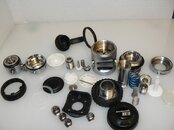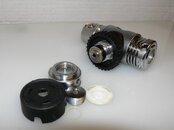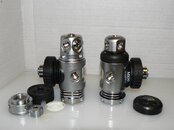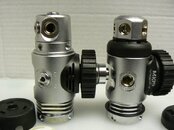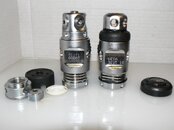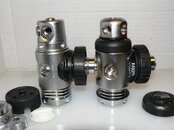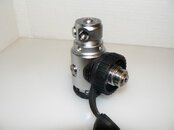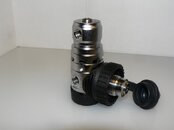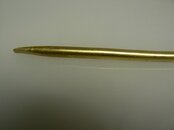A late follow up, I recently got my hands on a couple of mk19s (the original, I also have the evo)
And my first instinct was ofcourse to open it up and finally have a looksy inside since the original presentation didn’t have it
Here are a few pictures (next to the body of an mk17 non evo)
The plastic cup that does the flow redirect was an odd discovery, I thought that was carved into the body
Just for the usual suspects……
The reason why here on SB hardly anybody knows the Aspirator of the MK19, is, because in the US the MK18 and the MK19 were never officially sold.
The MK18 has the same Aspirator as the MK19, and the MK19 is just a dry version of the MK18, a mix of a MK18 with a MK17.
Seems SP Europe (Italy) went a different way than the SP US market and tried to offer another time a membrane 1st to their customers with a turret (after the MK14 was no success), while SP USA was reluctant to that idea.
Probably in Europe they were not so happy with the sales numbers of the MK18 and thought that a ‘dry’ MK18 might bring the success.
So in Italy they just took the MK18 design, improved the flow channels for a better air delivery capacity and used dry chamber parts of the MK17 to make the new model dry, and ready was the MK19, which also did not meet the high expectations in terms of sales, so SP Europe gave up just two years later in 2009.
Seems time was still not ready for the European SP Diver Community for a real MK25 challenger…..
When the MK19 EVO came out, SP had improved again quite some design aspects, among them HF Ports, which the MK18/19 didn’t have, and finally the SP turret 1st fraction seemed to be ready to go for it.
So if you have an old MK18 and you want it as a ‘dry MK19’, just change the Diaphragm Holder Combo for the MK17 (19) ones and you are fine and let other divers think about what you have there….
Would be probably an interesting Frankenreg…..
The air flow capacity will be not as good as the one of the original MK19, but it’s enough air anyway……
As member of the SP Turret fraction ( since 40 years diving MK5/10/20/25) I have always liked the MK18/19 and maybe now also some guys on the other side of the Atlantic get a bit curious…..



